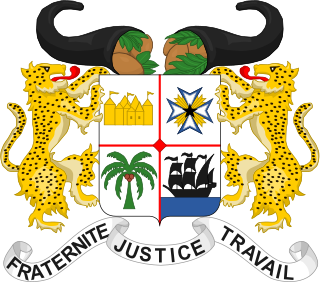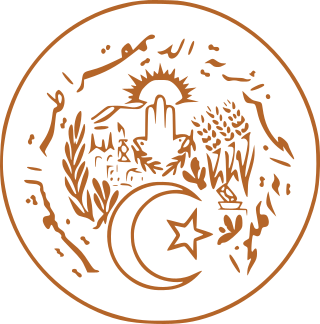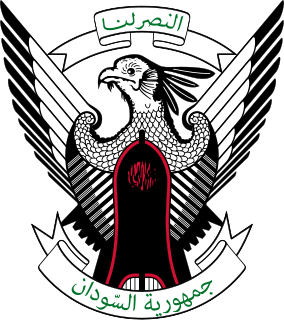
The Federation of Arab Republics was an attempt by Muammar Gaddafi to merge Libya, Egypt and Syria in order to create a United Arab state. Although approved by a referendum in each country on 1 September 1971, the three countries disagreed on the specific terms of the merger. The federation lasted from 1 January 1972 to 19 November 1977.

Parliamentary elections were held in the People's Republic of the Congo on 24 June 1973, concurrent with a constitutional referendum. The country was a one-party state at the time, with the Congolese Party of Labour as the sole legal party. As such, it won all 115 seats in the People’s National Assembly. Voter turnout was 83.2%.

Parliamentary elections were held in the Republic of Dahomey on 11 December 1960. The result was a victory for the Dahomeyan Unity Party (PDU), a merger of the Dahomeyan Democratic Rally and the Dahomey Nationalist Party, which won all 60 seats. Voter turnout was 71.0%.

A constitutional referendum was held in the People's Republic of the Congo on 24 June 1973. The new constitution was approved by 76.7% of voters with an 83.1% turnout.

General elections were held in Togo on 9 April 1961, alongside a constitutional referendum. It was the first time the President had been directly elected, and Prime Minister Sylvanus Olympio of the Party of Togolese Unity was the only candidate. He was elected unopposed, with the PUT won all 52 seats in the National Assembly. Voter turnout was 90.0%.

Parliamentary elections were held in Senegal on 22 March 1959. The result was a victory for the Senegalese Progressive Union. Voter turnout was 74.5%.

A referendum on the enrichment of the National Charter was held in Algeria on 16 January 1986. The changes were approved by 98.3% of voters with a turnout of 95.9%.

Parliamentary elections were held in Algeria on 20 September 1964. The country was a one-party state at the time, with the National Liberation Front as the sole legal party. As a result, the election took the format of a yes or no vote on the FLN. Voter turnout was 85%.

Presidential elections were held for the first time in Algeria on 15 September 1963. Incumbent Ahmed Ben Bella of the National Liberation Front was the only candidate, and was re-elected with 99.6% of the vote, based on an 88.9% turnout.

A presidential election was held in the United Arab Republic on 15 March 1965. The election took the form of a referendum on the candidacy of Gamal Abdel Nasser, who ran unopposed. He won with almost seven million votes, and only 65 against. Voter turnout was 98.5%.

A referendum on the 30 March Program was held in the United Arab Republic on 2 May 1968. It was approved by 100% of voters, with only 798 votes against. Voter turnout was 98.2%.

A constitutional referendum was held in Egypt on 11 September 1971. The changes to the constitution were approved by 99.98% of voters, with a turnout of 95.1%.

A referendum on the October Paper was held in Egypt on 15 May 1974. It was approved by 99.9% of voters, with a turnout of 97.9%.

A referendum on the Federation of Arab Republics was held in Libya on 1 September 1971, alongside simultaneous referendums in Egypt and Syria. It was approved by 98.6% of voters, with a turnout of 94.6%.

A referendum on "the protection of national unity" was held in Egypt on 10 February 1977. It was approved by 99.4% of voters, with a turnout of 96.7%.

A referendum on "the protection of national unity and social peace" was held in Egypt on 21 May 1978. It was approved by 98.3% of voters.

A referendum on "the protection of national unity" was held in Egypt on 10 September 1981. It was approved by 99.5% of voters.

Presidential elections were held in Sudan between 10 and 20 April 1977. Gaafar Nimeiry was the only candidate, and received 99.1% of the vote, with a 98.3% turnout.

Presidential elections were held in Sudan between 14 and 25 April 1983. Gaafar Nimeiry was the only candidate, and received 99.6% of the vote.

Parliamentary elections were held in British Cameroons on 30 December 1961. The result was a victory for the Kamerun National Democratic Party, which won 24 of the 37 seats in the House of Assembly.















